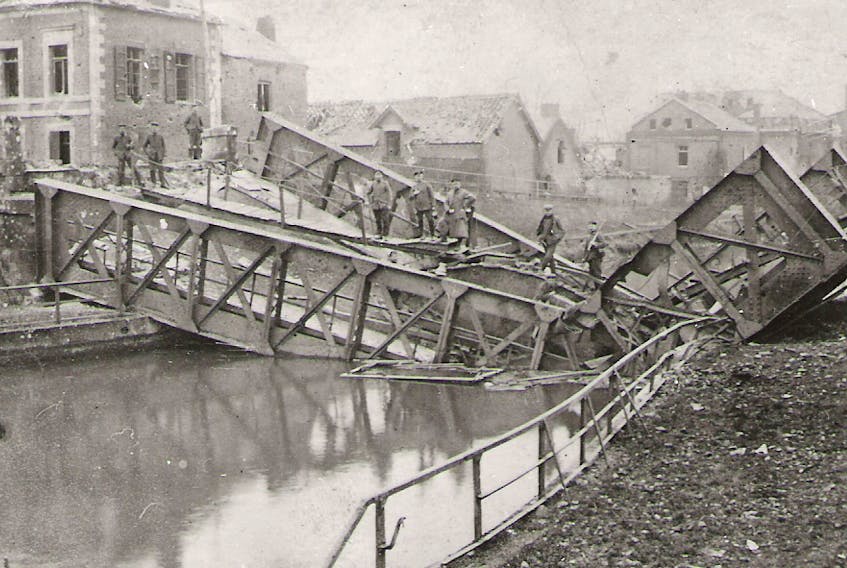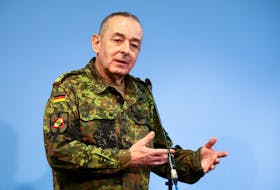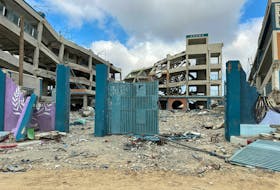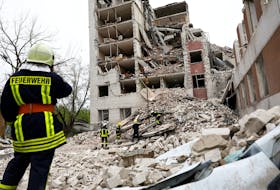Everywhere you go in the world, people from Newfoundland and Labrador are revered as hard-working, funny and kind people.
If there is an issue, call a Newfoundlander and Labradorian and they will be the first one to step up to do the heavy lifting that others won’t.
These statements hold true for a generation of forefathers from this province who answered the call during the First World War. Young men signed up en masse to serve king and country during the first Great War and fought in — and were instrumental in — the successes experienced by the Allied forces in defeating the Germans.
The Newfoundland Regiment was a key contributor to an epic three-prong battle that is commemorating its 100th anniversary today.
Cambrai, a village in France, was the site of a three-stage battle that started on Nov. 20. It saw the Newfoundland Regiment (29th Division) successfully defeat a German force that had them badly outmanned. It also marked the first time tanks were used in a battle.
They were assigned the most difficult task on the first day of fighting to take the western lock crossing at Masnières.
The houses at the lock, a ridge on the far side and lack of cover on the approach dominated the approach to the lock.
The Regiment was also instrumental in clearing out the village during the night and moving the more than 400 refugees in Masnières at the time, back through the lines.
The Newfoundland involvement can be broken into several parts starting with the attack against the Hindenburg Line on Nov. 20 and a fighting withdrawal in the face of the massive German counterattack on Nov. 30.
The 29th Division was the only division that did not collapse on Nov. 30.
During the war there were two engagements where significant numbers of regiment soldiers were captured including on Dec. 3 at Cambrai. As the Germans broke through the lines they carried away 22 soldiers from the Newfoundland Regiment.
On the battlefield
The Telegram
The first large-scale use of tanks for a military offensive highlighted the Battle of Cambrai.
Led by General Julian Byng, a British force of nine infantry divisions, five cavalry divisions and three tanks brigades sprung a surprise attack near Cambrai, France, on Nov. 20, 1917.
Cambrai was chosen by British command as the scene for the offensive. The town, one of the principal railway intersections and German garrisons of the Western Front, lay on a plain that was ideal terrain for the tanks.
“The story of the defence of Masnières and of the part which the Newfoundland Battalion played in it is one which, I trust, will never be forgotten on our side of the Atlantic.”
Field Marshal Douglas Haig
The Newfoundland Regiment — not yet given its Royal designation — was part of that fight group, joining those forces as the 29th Battalion.
The Battalion, comprised of more than 550 Newfoundlanders, was able to overwhelm the German forces on that day, but a counterattack 10 days later on Nov. 30, saw the Germans regain most of the ground taken in the first battle.
The Battle of Cambrai officially ended on Dec. 7. The Allies had gained in some areas and lost in others, gaining little territory from the battle.
The British casualties numbered more than 40,000 while German casualties were estimated to be about 45,000.
The Newfoundland Regiment suffered 110 casualties from the Battle of Cambrai and 352 more were wounded.
In recognition of its contribution at Cambrai and at the Third Battle of Ypres from July to November 1917 (sometimes referred to as the Battle of Passchendaele), King George V awarded the prefix Royal to the Regiment’s title.
The Royal Newfoundland Regiment was the only regiment on which this honour was bestowed during the First World War, and only the third time it had been given to a regiment in time of war, the others in 1695 and 1885.
Field Marshal Douglas Haig noted, “The story of the defence of Masnières and of the part which the Newfoundland Battalion played in it is one which, I trust, will never be forgotten on our side of the Atlantic.”
Find out more about this historical event HERE









